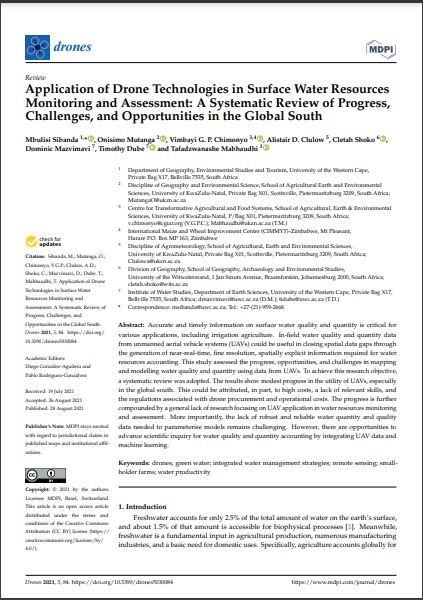Accurate and timely information on surface water quality and quantity is critical for various applications, including irrigation agriculture. In-field water quality and quantity data from unmanned aerial vehicle systems (UAVs) could be useful in closing spatial data gaps through the generation of near-real-time, fine resolution, spatially explicit information required for water resources accounting. This study assessed the progress, opportunities, and challenges in mapping and modelling water quality and quantity using data from UAVs. To achieve this research objective, a systematic review was adopted. The results show modest progress in the utility of UAVs, especially in the global south. This could be attributed, in part, to high costs, a lack of relevant skills, and the regulations associated with drone procurement and operational costs. The progress is further compounded by a general lack of research focusing on UAV application in water resources monitoring and assessment. More importantly, the lack of robust and reliable water quantity and quality data needed to parameterise models remains challenging. However, there are opportunities to advance scientific inquiry for water quality and quantity accounting by integrating UAV data and machine learning.

